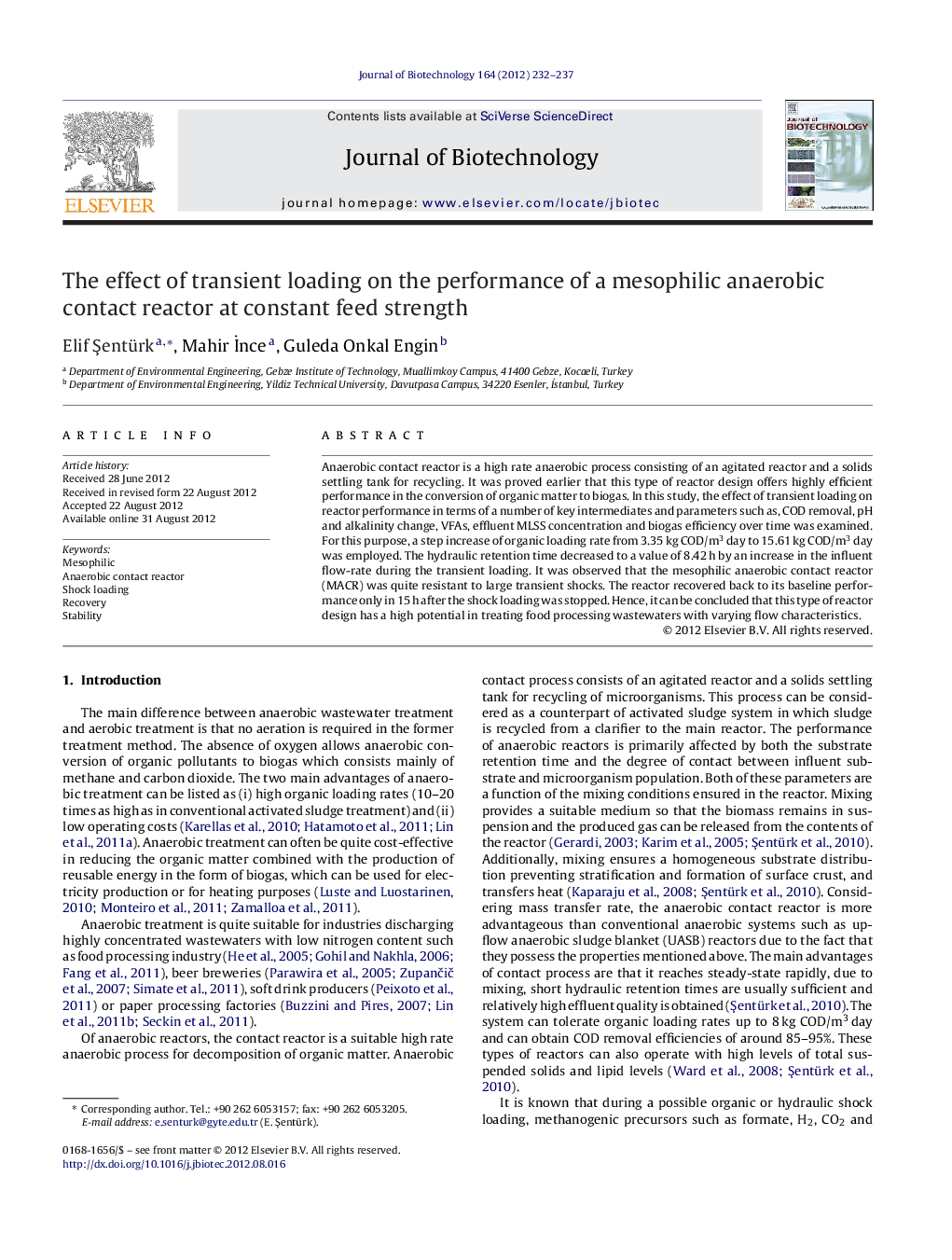| کد مقاله | کد نشریه | سال انتشار | مقاله انگلیسی | نسخه تمام متن |
|---|---|---|---|---|
| 23314 | 43431 | 2013 | 6 صفحه PDF | دانلود رایگان |

Anaerobic contact reactor is a high rate anaerobic process consisting of an agitated reactor and a solids settling tank for recycling. It was proved earlier that this type of reactor design offers highly efficient performance in the conversion of organic matter to biogas. In this study, the effect of transient loading on reactor performance in terms of a number of key intermediates and parameters such as, COD removal, pH and alkalinity change, VFAs, effluent MLSS concentration and biogas efficiency over time was examined. For this purpose, a step increase of organic loading rate from 3.35 kg COD/m3 day to 15.61 kg COD/m3 day was employed. The hydraulic retention time decreased to a value of 8.42 h by an increase in the influent flow-rate during the transient loading. It was observed that the mesophilic anaerobic contact reactor (MACR) was quite resistant to large transient shocks. The reactor recovered back to its baseline performance only in 15 h after the shock loading was stopped. Hence, it can be concluded that this type of reactor design has a high potential in treating food processing wastewaters with varying flow characteristics.
► The anaerobic contact reactor was less affected by shock loading compared to the other anaerobic systems.
► The precipitation tank have damping effects.
► The soluble COD removal efficiency decreased under the stressed conditions.
► The performance of the MACR reached pre-shock-load levels immediately after the OLR was restored to initial values.
Journal: Journal of Biotechnology - Volume 164, Issue 2, March 2013, Pages 232–237